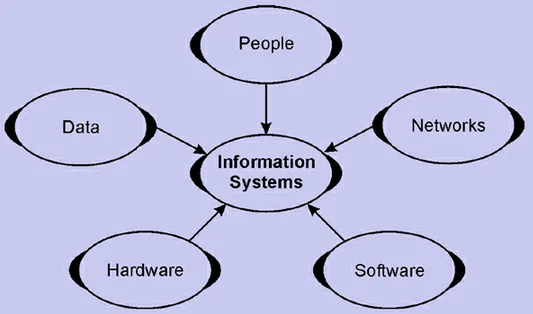
An information system is a combination of various components that work together to collect, process, store, and distribute information within an organization.
The five main components of an information system are:
Hardware: Hardware refers to the physical devices and equipment used to process, store, and transmit data. This includes computers, servers, networking devices, storage devices, input/output devices (such as keyboards, monitors, and printers), and other related equipment.
Software: Software consists of the programs and applications that enable users to perform tasks and manipulate data. This includes operating systems, application software, database management systems, and other software tools used for specific functions.
Data: Data is the raw material that information systems collect, process, and store. It can be structured (organized in a specific format, such as databases) or unstructured (text, images, audio, video). Data is the foundation for generating meaningful information.
Procedures: Procedures refer to the set of rules, guidelines, and instructions that govern how the system is used and how tasks are performed. Proper procedures ensure consistency, accuracy, and security in handling data and using the system effectively.
People: People are the users, stakeholders, and personnel involved in the information system. This includes system administrators, data analysts, programmers, end-users, and management. Human interaction with the system is crucial for its successful operation and utilization.
Additionally, it's important to note that some models might include a sixth component:
These components work in synergy to create an integrated information system that supports an organization's goals and objectives by facilitating efficient data processing, informed decision-making, and effective communication.
Thank You